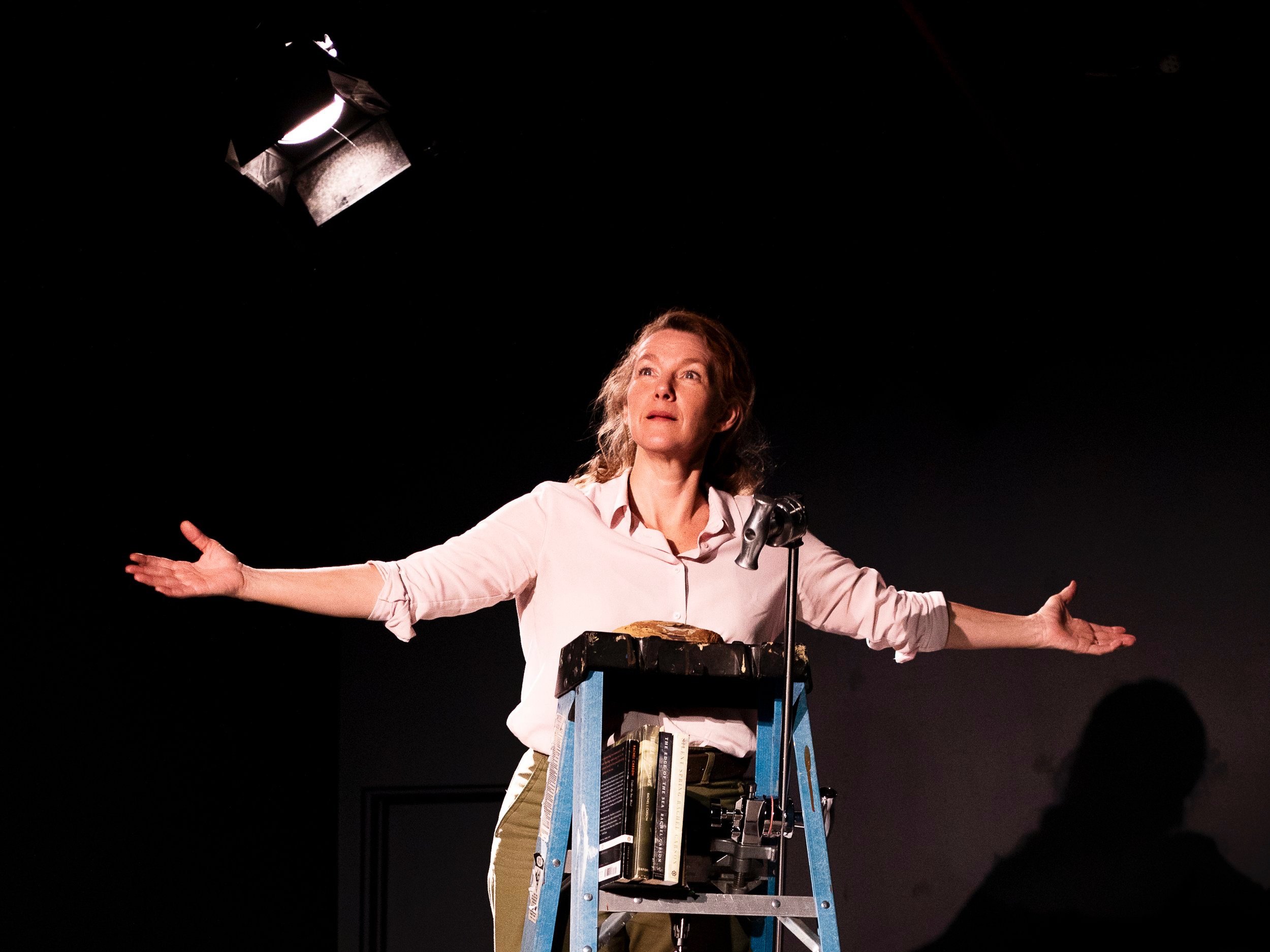A Q&A with “Understanding Rachel” Star and Writer Elise Robertson
Elise Robertson is the star, writer, and director of “Understanding Rachel,” a one-woman show depicting a coming-of-age narrative interweaving the story of her own life and that of Rachel Carson ’29. (Courtesy of Elise Robertson)
Elise Robertson found “Under the Sea Wind” by Rachel Carson ’29 captivating.
“The cool thing about how Rachel Carson wrote is she did not anthropomorphize her creatures,” she said.
“She was always trying to write in their perspective as that creature, not the human interpretation of that creature, and when I read ‘Under the Sea Wind,’ I was just swept up in these descriptions of what it felt like to be a mackerel egg floating in the ocean.”
Robertson is performing her one-woman show “Understanding Rachel” at this year’s Barbara Stone Hollander ’60 Women’s Leadership Award and Lecture.
The show weaves together a dual narrative in which Robertson (played by herself) tries to understand how she and Carson (also portrayed by Robertson) could have grown up decades apart in the same area of southwestern Pennsylvania, yet their lives took drastically different paths.
Robertson spoke to Pulse@ChathamU ahead of her performance of “Understanding Rachel” about the writing of the show, where its humor comes from, and how it ties into Chatham University.
These responses have been condensed and edited for clarity.
You’ve talked a bit about how this show was inspired by the similarities you saw between yourself and Rachel Carson, but when did you know that was something you could build a narrative around?
That was what got me interested in the beginning and what got me interested in her as a subject. I care about the environment, I’m from Pittsburgh, we grew up in the same neighborhood practically. But what really inspired the show in its current format is not what we have in common but the disconnect I found in trying to understand Rachel as a human.
I was having a hard time really tapping into why she made the choices she made and did the things that she did, and that became what I explored. Why am I not getting this? Why am I not relating to this character more? It seems like it should be such a match. That became the show—how did my background and her background take us to different places, and what could be learned there?
How did you decide on the tone with which you approached the material? Was it important to you that it was funny?
I think accessibility is the key. I think funny is always good. I want people to enjoy themselves, I don’t want anyone to feel scared of a history lesson. I want them to feel they can relate to it, and I don’t want anyone to take themselves or this life that we’re in too seriously. If you can make it fun or funny, then people don’t feel like they’re being lectured. They feel like they’re being invited to join into an experience.
When you were researching this show, what did you read?
I read every biography I could find, from the Linda Lear [“Rachel Carson: Witness for Nature,”] which is like the comprehensive biography, to “House of Life: Rachel Carson at Work,” the Paul Brooks book about his relationship with Rachel and her writing. Paul Brooks was her editor. Literally every biography I could find, I read cover to cover and refer back to often. There were lots of magazine articles as well, all the photographs I could find, I just kept digging and digging.
I would find these stories, and the ones that I had a really visceral response to, those were the ones that I ended up gleaning out to bring into my story, and there are of course so many that I didn’t get to keep in, because I ended up honing down the story to be this intertwining of her experience and my experience and what led her to write “Silent Spring.”
Where in this process did you realize that you were going to be part of the narrative?
You know, I have to give a lot of credit to Ann Noble, she was the sort of the moderator of this solo group, [Unmuted Participants,] that we would do during the pandemic. And I would get stuck in my writing, and I would just write about writing, just kind of jamming out whatever was coming to me. She was the first one that was like, “Hey, Elise— maybe you should consider that as part of the script.”
Hopefully what I’m inviting the audience to do is invite their own way in, I’m inviting them to be part of this journey too. I had these connections, and I had these disconnects, and I didn’t understand what was happening, and I kept exploring. I came to understand that we’re all on this road together, all trying to make sense of it, and our journeys matter too.
Is it significant for you to bring this show to Chatham?
Absolutely. Oh my gosh. To bring it to this campus is so meaningful, it’s sort of like coming full circle to bring it back to where Rachel Carson actually studied is kind of amazing. I’ve written a few bits and pieces in to reference that we’re at ground zero for Rachel Carson as a student. And it’s also significant that we’re in the city of Pittsburgh, because I do talk about some of my childhood, as well as her childhood, here. So, folks will know the locations I talk about like Saw Mill Run Boulevard or going to Wildwood to do research. This is the first time this will be done in Pittsburgh.
Learn more about the Chatham University Women’s Institute, a part of Chatham’s ongoing focus on women’s leadership and gender equity.

